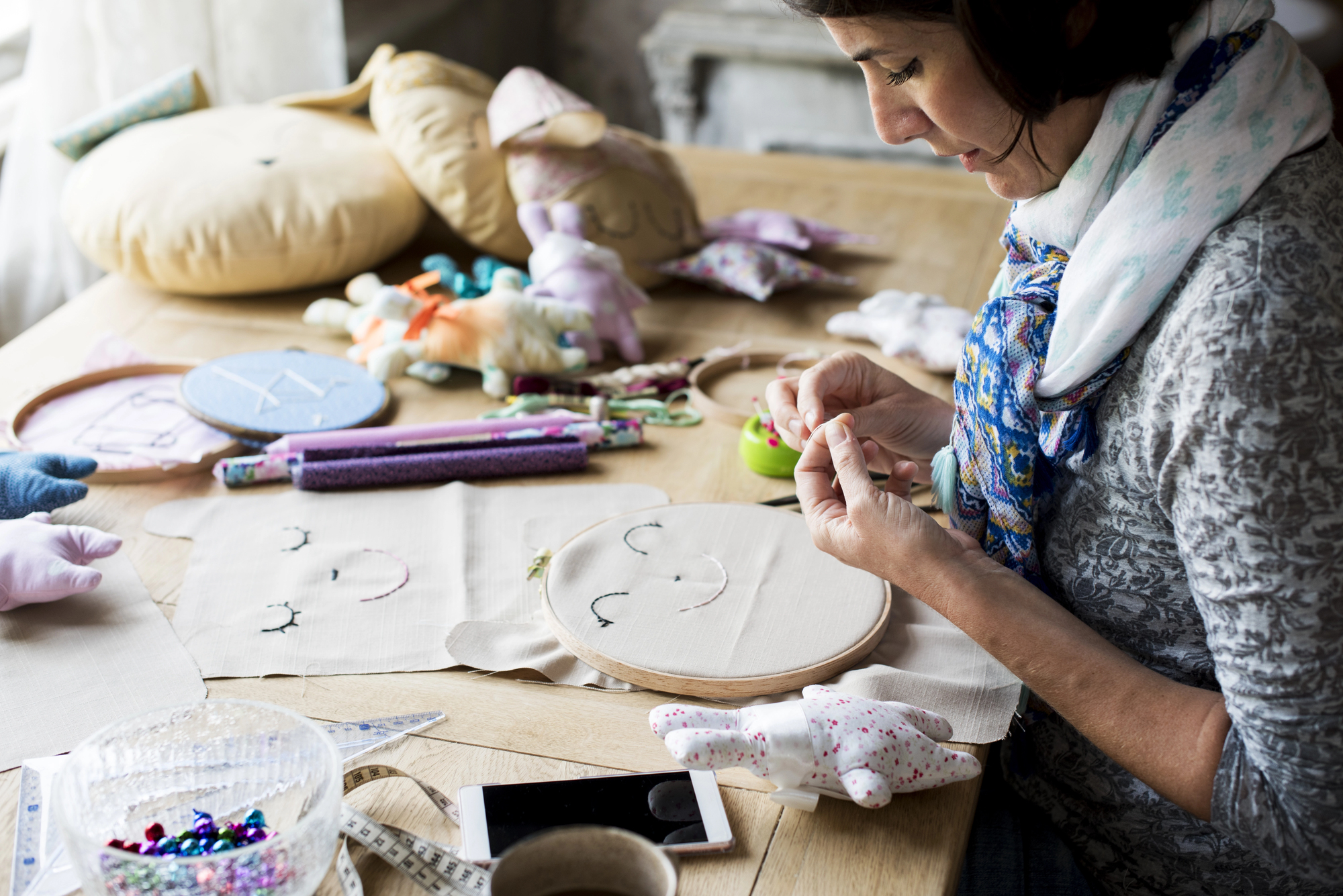What is fear of change?

On its most fundamental level, fear of change is fear of the unknown. There’s an immense amount of comfort to be found in routine, and when those routines are disrupted, many people feel anxious and destabilized.
Do you know why most children prefer snacks like crackers to blueberries? Because they can depend on the fact that every cracker they eat will taste exactly the same as all the others.
One blueberry might be tart while another is sweet, and they’ll have to deal with the shock and displeasure associated with unwanted tastes in their mouth. In contrast, they can feel “safe” knowing that they’ll never have to deal with surprise unpleasantness with those crackers they love so much.
Aversion to change is exactly this: the worry that if they do things that differ from comfortable habits and routines, they may have to deal with unexpected discomfort. When things are certain, they’re tangible and can be handled accordingly. In contrast, when details are unknown, absolutely anything can happen.
What are the symptoms?

You may experience all the symptoms listed below or just some of them, as responses will differ depending on the person.
– Intense anxiety or panic when faced with unexpected change
– Spiraling “what if” worries about all the potential outcomes (usually anticipating worst-case scenarios)
– Heart palpitations
– Sweaty palms
– Awareness that there’s no threat or that the fear is irrational, but having no control over the emotions that are coming up
– Need for immediate comfort (e.g., a favorite food or beverage, a retreat to a place that you consider comforting and stable, etc.)
– Pressing desire to be reassured by those close to you: some people find that their anxiety about change lessens when they’re comforted by a loved one’s voice
– Immediate resistance: without taking into consideration that this change might be positive, the initial reaction is “NO,” followed by digging one’s heels in to stop the change from happening
– Shock: may include shaking, emotional or physical numbness (or both), and disassociation
– A feeling of despair or grief usually related to mourning, even if no change or loss has occurred yet
How to overcome the fear of change:

Since change is inevitable in life, it’s important to learn how to navigate it. There’s no one-size-fits-all approach here, but each tip can be adapted to your own individual needs and preferences.
Hopefully, they’ll help lessen the idea that change is scary, and encourage you to embrace it when it arises instead.
1. Make change more manageable.

This strategy can be particularly helpful for those who struggle with change because they are autistic or otherwise neurodivergent. It can be used by anyone though, as it respects and meets you where you are currently at.
To make change more manageable, create a detailed plan that outlines the steps involved in the transition. Use visual aids like calendars or social stories to help visualize the process. Maintain some familiar elements in your environment to provide a sense of stability. Allow yourself extra time to process and adjust to new situations.
Utilize activities, special interests or comforting behaviors to help manage your emotions during times of change. Remember, it’s okay to communicate your needs and ask for accommodations when facing transitions. By implementing these strategies, you can become more comfortable with change while honoring your own needs.
2. Expose yourself to small changes (“baby steps”).

If your fear of change is phobia-based, and not as a result of neurodivergence, gradual exposure may help. This is a technique that many therapists use to help their patients get over various fears.
For example, someone who has a phobia of spiders might be encouraged to look at photos of friendly cartoon spiders, followed by a viewing of Charlotte’s Web once they’ve stopped vomiting in fear about the cartoon images.
Over time, the therapy might extend to looking at photos of friendly jumping spiders with happy colors. Before the patient knows it, they stop having visceral reactions every time they see an eight-legged creature.
If you’re so scared of change that the thought of it terrifies you, take the initiative to make miniscule changes intentionally.
For example, if you eat a ham sandwich on white bread for lunch every day of your life, try it on multigrain bread instead. That way the flavors are still “safe” for you, but you can learn to recognize that trying new things doesn’t have to be scary: in fact, they can be downright tasty. From there, you can maybe ease on to stuffing said ham into a croissant, or (if you’re feeling brave), try some smoked turkey on white bread instead.
These changes don’t have to be food-related, of course. It can relate to any aspect of your life. By taking the initiative and making tiny little changes that are completely within your own control, the fear factor is eliminated. As a result, you’ll have established coping skills that’ll help you manage big changes when and if they occur.
Important note: If your aversion to change is a result of being autistic or otherwise neurodivergent, we wouldn’t recommend any sort of exposure therapy, formal or informal, as it can lead to masking, causing more harm than good.
3. Write a list of changes that have been beneficial to you.

Grab your journal and write a list of all the changes you’ve experienced that have been beneficial to you.
For example, if your family hadn’t moved when you were 11, you never would have met your lifelong best friend. Or, if the cafe you went to every day didn’t run out of your usual order, you wouldn’t have discovered your new favorite meal.
While you’re doing this, it’s important to revisit changes that were uncomfortable and even frightening to you at the time, but that ended up being beneficial to you later. Did you experience a period of difficulty that granted you new abilities that you’ve been able to put to use over the years?
Maybe you’ve had bad breakups that allowed you to see damaging relationship patterns, or you experienced an illness that encouraged you to adopt a healthier lifestyle.
These changes may have been unpleasant at the time, but you wouldn’t be the current, awesome version of yourself without them. As such, it’s important to take note of these instances and appreciate what they’ve done for you.
Write down every change you’ve ever experienced, no matter how small or inconsequential it might seem in the grand scheme of things. As that list grows, you’ll notice that many of the changes that were initially scary or intimidating to you ended up making you much happier and more fulfilled.
4. Respond to “what if” thoughts with positivity.

One of the main reasons why people fear change so much is that they spiral into frightening “what if” worries.
What if things go horribly wrong? What if I fail? What if people make fun of me?
Any time you start to feel those worrisome questions pop into your mind, replace them with positive ones instead, such as:
What if everything works out great? What if I make some amazing new friends?
What if I end up being the happiest, healthiest version of myself?
I’m guessing that simply reading these words may have caused a lightening of spirit in the center of your chest. The energy that we put into things directly influences how they play out. As such, try to choose positivity and enthusiasm whenever possible. Try to respond to changes with openness and curiosity, and these changes will stop being quite so frightening to you.
5. Stay in the present moment.

Whenever the “what if” worries start to spiral out, with all the unknown variables and potential bugbears rising up, bring your attention back to the present moment.
This breath. This heartbeat. What you can tangibly see, smell, touch, hear.
When you stay in the present moment, you have no need to be anxious about the future, nor lament anything that happened in the past.
All we ever have is this moment, and immersing in it fully means that you’re not even thinking about what may or may not occur. As a result, you’ll end up flowing with change as it unfolds: responding to it naturally and gracefully.
It’s rather like what happens if a person falls into a river. If they thrash against the current, desperate to reach the shore on their terms, they’ll end up inhaling (and drinking) a lot of brackish water. They may even risk drowning before they get to safety.
In contrast, if they allow themselves to flow with the current, they can angle themselves toward the shore and be taken there naturally.
Sure, they might end up a bit further downstream than they’d intended, but they also might emerge onto the shore where a bunch of gorgeous campers just happen to be sunbathing.
It’s not unusual for life to take us in directions that we may not have anticipated, but that end up being beneficial to us in the long run. If we relax into the experience rather than fighting against it because we’re afraid of change, we might end up having an extraordinary amount of fun.
6. Spend time in nature.

This is mentioned so much that it may be construed as a panacea, but there are many reasons why spending time in nature is so important. In this situation, it’s because being out in the woods, or down by the water, allows us to see the beauty that change can bring.
Remember how we touched upon death and old trees earlier? There’s nothing like seeing a forest ecosystem thriving to understand why change and death are so important for new life to flourish.
If you see an old, fallen tree that’s rotting on the forest floor, go take a close look at it. You’ll notice hundreds (if not thousands) of life forms all over, within, and around it. Small animals may nest in its trunk, while insects crawl around it to break it down.
Birds will feed on those insects, and medicinal fungi are likely growing all over it. And the humus created by its decomposing body will nourish forest flowers, berry bushes, and eventually new tree seedlings as well.
Furthermore, that tree needed to fall in order to allow sunshine to spill over the other trees and bushes all around it. They can only thrive properly now that the old one has made way for them. Consider the lessons that can teach us about our own life journeys, and try to draw peace and comfort from the beauty change can bring us.
7. Find outlets that work best for you.

One of the best ways to deal with fear of change is to have regular habits and self-care techniques that you do on a regular basis.
For some people, this might involve physical exercise such as running, yoga, Tai chi, or dance. Others might prefer creative outlets like painting, carpentry, or various crafts. The key here is to find an outlet that brings you a sense of calm and grounding and that you can incorporate into a regular schedule.
When everything around you is changing and seems to be out of your control, come back to the present and take part in one of these outlets.
Pick up that knitting project and purl a few rows, or do a few sun salutations to help you regroup. Take deep breaths, and let the comfort of familiarity help you release anxieties that may be swirling around you.
8. Accept that change is inevitable.

“Omnia mutantur, nihil interit” means that everything changes, but nothing is ever truly lost.
Every experience you’ve ever had has come to an end, whether good or bad. You may have been in great situations that you were sad to leave, or uncomfortable ones that were a relief to get over and done with.
Romantic relationships may change or even come to a natural end, but that doesn’t mean that person needs to be out of your life forever. You may discover that you’re far happier as friends than lovers. Alternatively, even if you part ways permanently, you’ll always have amazing memories to look back on.
The same goes for any other situation you’ll ever find yourself in. You’ve undoubtedly learned different skills at various jobs you’ve held, plus countless techniques for cooking, home repair, first aid, and so on.
Keep in mind that you’re not even the same person now as you were when you started reading this article. Over the course of the past few minutes, old cells in your body have died and new ones have been created. You’ve digested food you ate earlier to break it down into essential nutrients, which are now zipping through your veins to feed your bones and organs.
These changes may be miniscule, but you wouldn’t be able to continue living without them.
Most of the difficulties people experience arise when they resist what’s unfolding. You may not want this change to happen, especially if you’re content and comfortable in your current situation, but that doesn’t mean that change isn’t needed.
9. Work with a therapist to help you overcome your anxiety about change.
 You will likely find it easier to change with professional help.
You will likely find it easier to change with professional help.
If you aren’t sure why you feel change is scary, or if you’d like to learn how to better cope with the inevitability of change, then it’s a great idea to find a therapist. They can help you dive into the reasons why you have this aversion, and they can assist you in developing a set of personalized coping mechanisms to help you deal with it.
Since change is inevitable in life, having a well-stocked toolbox to help you manage your responses to it is incredibly important. Furthermore, understanding why you tend to react to change with fear can be invaluable for dispelling said worries.
Many of us have repressed memories of traumatic experiences that influence our reactions to various life situations. If we can unpack those from the dusty closets they’ve been crammed into, we can glean a better understanding of why we respond the way we do. Once we have this understanding, our fears and aversions often alleviate significantly.
Therapists can also be immensely beneficial when it comes to navigating the change itself. For example, if said change involves a health issue, relationship change (or ending), pregnancy/childbirth, or changes associated with aging, they can help you determine exactly what it is that you’re anxious about. Once you’ve narrowed it down, you’ll be able to work together to find the best and healthiest way to move forward.
Note: If you’re autistic or otherwise neurodivergent, we’d recommend finding a neuroaffirming (or even better, neurodivergent) therapist who will honor your neurotype and meet you where you’re at. If you’re autistic, we would not recommend exposure therapy for overcoming your fear of change as it can lead to masking, causing more harm than good.
Finally…

Have you watched the Lord of the Rings films or read the books? If you have, you likely remember the huge, scary shadow that Samwise Gamgee cast on the walls of the orc’s tower as he was climbing it to rescue Frodo. Those filthy beasts were terrified that a fierce elven lord was approaching them to run them through, when in reality it was a little hobbit wearing a saucepan on his head.
If you look back at all the difficult situations you’ve navigated over the years, you’ll likely remember that the worries you had about all of them far exceeded whatever actually happened.
How afraid have you been about dental visits, only to discover that they weren’t so bad after all?
Remember how terrified you were when you started dating that new person, and now you share silly memes in bed every night, perfectly comfortable with each other?
I’ll share a personal anecdote here: I’ve spent most of my life living in rural Canada, where it’s cold and snowy for over half the year. Some people suffer from seasonal affective disorder/depression (SAD) during the winter, when there doesn’t seem to be an end to the dreary gray weather.
When I had the opportunity to do volunteer work in California over the winter a few years ago, I hesitated. I’d never been there before and had never been away from my pets for more than a day or two. Sure, being at home in the mountains was miserable in wintertime, but I knew what to expect, and I had the comfort and security of my animals around me.
I decided to take a chance and accepted the 10-week volunteer position, and had a trusted family member take care of my home and animals while I was gone. I was anxious about them, and texted several times a day while I was away, but also had one of the best experiences of my life. I basked in sunshine, happily surrounded by palm trees and flowers, and met people who changed my life for the better, forever.
Change can be absolutely magnificent, and if we lean into it with curiosity and optimism, we often discover that it leads us to adventures that we never dreamed were possible.
Be brave, dear hearts. You can conquer these fears and leap into the great unknown with confidence and excitement. Just make sure to pick up another journal or two so you can document all the wonderful ways that life unfolds before you.





